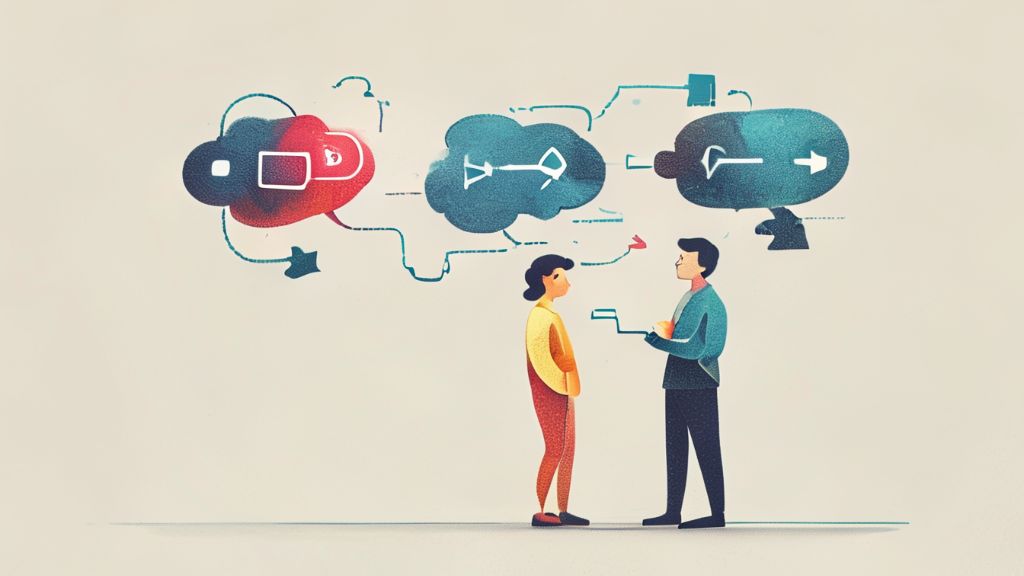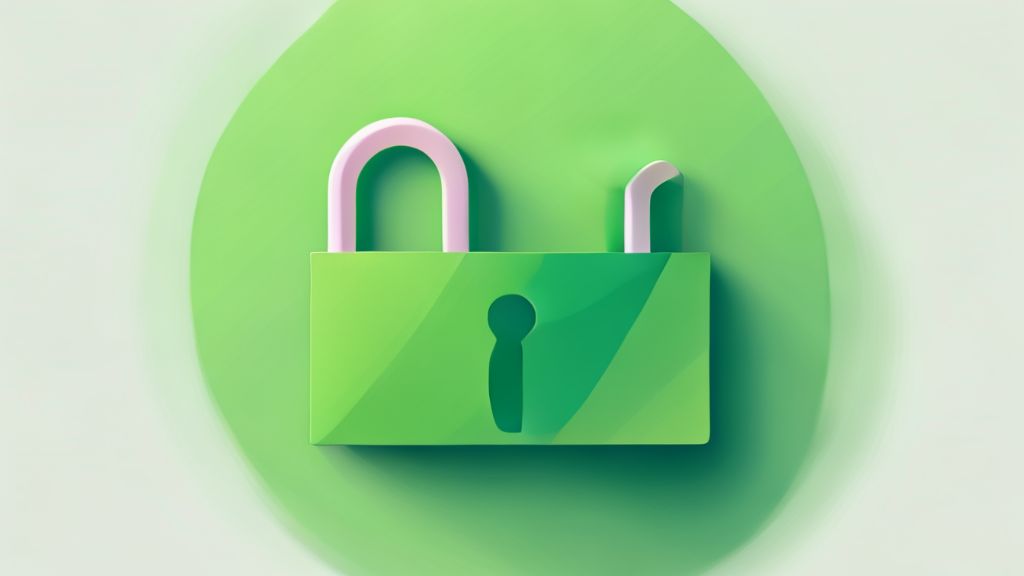Unlocking the Mystery: Your Easy Guide to Bitcoin and Crypto
Unlocking the Mystery: Your Easy Guide to Bitcoin and Crypto
1. Remember When Crypto Felt Like a Secret Club?

You know, back in 2017, I first bumped into the world of cryptocurrency and Bitcoin through a friend. He was diving deep, reading, investing, and trying to make sense of it all . Honestly, at that time, it wasn’t something everyone was talking about, you know? He tried explaining it to me, but it was a bit hazy, I only got half of it . What’s fascinating is how things change; once something starts becoming more common, it suddenly feels much more interesting . That’s when I really started digging in, trying to understand this whole blockchain technology and peer-to-peer networks thing . For the longest time, I wanted to make a video about it, but people weren’t really asking questions back then . But lately, my comment section has been buzzing with questions about crypto . Since it’s getting popular, everyone wants to understand it better, right?
This whole journey led me to want to break it down in a super simple way, so easy that even a kid could grasp it . We’re going to chat about what crypto is, what blockchain does, what the future holds, how these cryptocurrencies actually work, and why their prices jump around . We’ll also cover who the miners are, what mining means, the concept of a peer-to-peer network, if it’s legal in India, and how you can actually trade and invest in it . By the end of this post, all these things should feel crystal clear to you . Plus, stick around, and I’ll tell you how you might even get some free Bitcoin just for understanding things . So let’s dive in and unravel this, shall we?
2. So, What Exactly IS This “Digital Money” Thing?

Let’s kick things off with a simple story, okay? Imagine two friends, Raj and Bajaj . Raj had some work done by Bajaj, worth ten rupees, but instead of giving cash, Raj offered a ten-rupee digital toffee . Bajaj thought, “Hey, to keep things simple and easy to track, especially since we might not always be physically together, let’s make this toffee digital” . Cool, a digital toffee sounds easy enough, right? But here’s the catch: anything digital can easily be copied and pasted . You could multiply it, send it to multiple people, and suddenly, that one digital toffee isn’t so limited anymore . This is the core problem with digital assets – how do you stop people from just making copies?
Now, what if, every time Raj gave Bajaj a digital toffee, it was recorded on a document on a computer? Something like, “Raj gave Bajaj one toffee” . This document, where you keep track of everything, is what we call a ledger . But hold on, if only one person is keeping this ledger, they could totally mess with it, right? They could change a ‘one’ to a ‘ten’ or do anything sneaky . This is where the truly revolutionary idea comes in, the big game-changer . What if this ledger wasn’t just on one computer, but stored on every single computer involved? What if every computer knew exactly how many digital toffees were out there, how many Raj had, and that Raj gave one to Bajaj, so now Bajaj has it? If this record was on every computer, and someone tried to tamper with it, it would immediately clash with all the other computers, and they’d be caught red-handed .
Think of cryptocurrency as those digital toffees that Raj and Bajaj exchanged . It’s essentially a secret currency, where ‘crypto’ means secret and ‘currency’ is for buying goods or services . It’s a private form of money, you could say . You’ve probably heard the names like Bitcoin or Ethereum, right? And the system where all these people are working together to keep that shared record? That’s the peer-to-peer network . Behind all of this is the amazing technology called blockchain .
3. How Does This Whole “Blockchain” Magic Actually Work?
Okay, so we have this shared ledger, right? The blockchain is essentially a chain of these digital records, or blocks . When a transaction happens, like Raj sending a digital toffee, that transaction gets recorded in a block . Once that block is full of transactions, it gets linked to the previous block . What’s super cool is that each new block containing transactions is linked back to the transactions in the block before it . This means all the transactions are connected, forming a chain .
Here’s where the magic of blockchain really shines: this chain of connected blocks isn’t just on one computer; it’s available across many computers with full transparency . This makes it incredibly difficult to mess with . If someone tries to change something, the system can track and detect that change because it won’t match the copies on all the other computers . Let’s go back to Raj and his Bitcoin . Say Raj had two Bitcoin and sent one to Bajaj . When this transaction is happening, the system checks if Raj actually has those two Bitcoin according to the ledger . Based on the transaction history, if he does, then the system verifies it, and his balance is updated, leaving him with one Bitcoin .
The beauty of blockchain is how this transaction is then linked to all of Raj’s previous transactions . It creates this unbroken, transparent history . Once verified, the transaction is complete, and this is the power of blockchain technology . It creates a secure, transparent, and tamper-proof way to record and track digital transactions, not just in one place, but across a distributed network, making it incredibly robust and reliable.
4. Who’s Keeping Track of All This, Anyway? (And What’s “Mining”?)
So, you might be wondering, if this public ledger is spread across lots of systems, who are the people actually keeping it up-to-date and taking responsibility for it? These individuals or groups are known as miners . And the process they perform, which involves maintaining and validating all these transactions on the ledger, is called mining . Here’s a surprising fact: it’s not like someone is sitting there manually writing everything down . This entire process is system-generated and completely automated, though it does require special computers and specific software .
What motivates these miners to dedicate their computing power to this task? Well, they’re rewarded for their efforts . The process of mining involves resources and often requires a financial investment in equipment, and in return, miners receive a reward in the very same cryptocurrency they are mining . It’s a clever system that incentivizes people to maintain the integrity of the network .
Essentially, cryptocurrency operates on this public, distributed ledger where transactions are recorded with total transparency across numerous systems . The system knows exactly who has how much money and who’s holding what . This forms a core principle of cryptocurrency – a decentralized and transparent record of ownership and transactions, all thanks to the work of the miners and the process of mining.
5. Why Does the Price Go Up and Down Like a Rollercoaster?
Now, you might be scratching your head, wondering how the price of something digital is even decided when there’s no central bank or authority controlling it . What you hear about Bitcoin‘s price going up or down? Here’s the thing: most cryptocurrencies are designed with a predetermined, fixed total number of coins that will ever exist . And you know what happens when something is limited or fixed in supply? Its value heavily depends on how much people want it – the demand .
Let’s think about land as an example . There’s only a fixed amount of land in the world, right? If lots of people want to buy a piece of land, the price is going to shoot up . But if fewer people are interested, the price will likely drop . It’s the same principle with cryptocurrency . When there’s high demand for a particular currency and more people want to buy it, the price goes up . Conversely, if demand drops, the price goes down . For instance, the supply of Bitcoin is capped at 21 million . So, its price fluctuates based on whether more people want to buy it or sell it .
It’s wild to think about the historical price changes of Bitcoin . Back in 2010, it was worth less than one rupee, and it’s since skyrocketed to around 30 lakh rupees today . Imagine if you had put just 100 rupees into Bitcoin in 2010 – you could have had 1.5 crore rupees now . Beyond just supply and demand, the price of cryptocurrency can also be swayed by news and the actions of big investors . A surprising fact: even something like a tweet from Elon Musk can cause the price of Bitcoin to jump or drop significantly . Before one of his tweets, Bitcoin was around 30,000 . It just shows how sensitive the market can be to external factors .
6. Is Crypto All Sunshine and Rainbows? Let’s Talk Pros and Cons.
Okay, let’s weigh the good and the not-so-good when it comes to cryptocurrency, because it’s not a one-size-fits-all situation. One of the biggest perks, and a key reason for its existence, is its decentralized nature . The idea that your money isn’t controlled by a single entity like a bank, a government, or any specific agency really appeals to some people . From my experience, many people are drawn to crypto because they feel this gives them more control over their own finances, free from potential government inflation or intervention .
Another big draw is the potential for rapid value increase . We just talked about how prices can surge due to demand, and this offers the chance for significant financial gains . However, with great potential comes risk, you know? This volatility means the value can drop just as quickly, sometimes even losing almost half its value in a short period . This brings us to a major disadvantage: the lack of a central authority . If something goes wrong, if you have a complaint, who do you turn to? There’s no bank or government body to regulate it, which is both a benefit and a drawback .
Here’s a less talked about side: because of its “secret currency” aspect, there’s a risk that cryptocurrency could be used for illegal activities, making it harder to trace transactions . Plus, something that’s becoming a bigger concern is the environmental impact of mining . The process requires a massive amount of power and electricity, using up valuable resources . While there are hopes that future advancements will make it more eco-friendly, it’s a significant issue right now that needs attention . On a more positive note, the underlying blockchain technology has uses far beyond just currency, like in education, healthcare, and data management, showing its potential for innovation .
7. Okay, But Can I Actually Use This in India? (And How to Get Started)
This is a common question, you know? Is investing in cryptocurrency legal in India? The short answer is yes, it is legal to invest in crypto here . However, it’s important to understand that it is not considered legal tender . This means you can’t use it directly to buy things in the market like you would with Indian Rupees . There was actually a point where the Reserve Bank of India had put a ban on crypto-related transactions, but the Supreme Court later lifted that ban . So, if you’re looking to invest and diversify your portfolio, you can absolutely do that in India .
So, where do you even begin if you want to dip your toes in? A straightforward option, and the knowledge partner for the video I learned from, is the CoinDCX Go app . Back in 2020, when the Supreme Court allowed Indian banks to work with cryptocurrency trading and investing, CoinDCX was one of the first apps to start collaborating with banks . CoinDCX Go is designed to be a simple version specifically for the Indian market . One big plus? They don’t charge you any fees for your transactions . They are also ISO certified and have strong security measures . They even provide insurance for users’ funds by collaborating with a company that specializes in insuring digital assets . Things like passwords and two-factor authentication are standard features to help keep your account safe . You can find more detailed information on their website if you want to learn more .
If you’re ready to give it a try, you can download the CoinDCX Go app, log in, link your bank account, and you can actually start investing in Bitcoin with as little as 10 rupees . Plus, if you use a referral code when you sign up, you might even get 100 rupees worth of Bitcoin for free . Now, here’s a crucial piece of advice, something I always emphasize: any kind of investment, whether it’s in stocks, gold, or crypto, should always be based on your personal risk tolerance . Think about how much you’re comfortable investing and what kind of portfolio suits you . Please, please, don’t ever invest out of greed or use borrowed money . It’s much smarter to start small, gain some experience, and take gradual steps as you learn more .
8. What Does the Future Hold for This Wild World?
So, we’ve covered a lot about Bitcoin and cryptocurrency, from what they are to how they work and even how to get started. Thinking about the future, the potential for the underlying blockchain technology is huge, stretching far beyond just being digital money . We could see it used in things like managing educational records, handling healthcare data, and revolutionizing how we manage information in all sorts of areas . It’s fascinating to consider all the different ways this technology could impact our lives in the coming years.
Of course, when it comes to the future of crypto itself, there are definitely different opinions out there, you know? Some folks see it as a really smart solution, while others view it as just a temporary trend . There are even those who feel like it’s just the beginning and there’s so much more to come . Because of these varying perspectives, it’s really important for you to do your own research and make your own informed decisions .
Ultimately, diving into the world of cryptocurrency and blockchain has been quite an experience for me, and I hope this easy guide has helped you understand the basics . The landscape is always evolving, and it’s exciting to think about what the future holds for this innovative technology .





